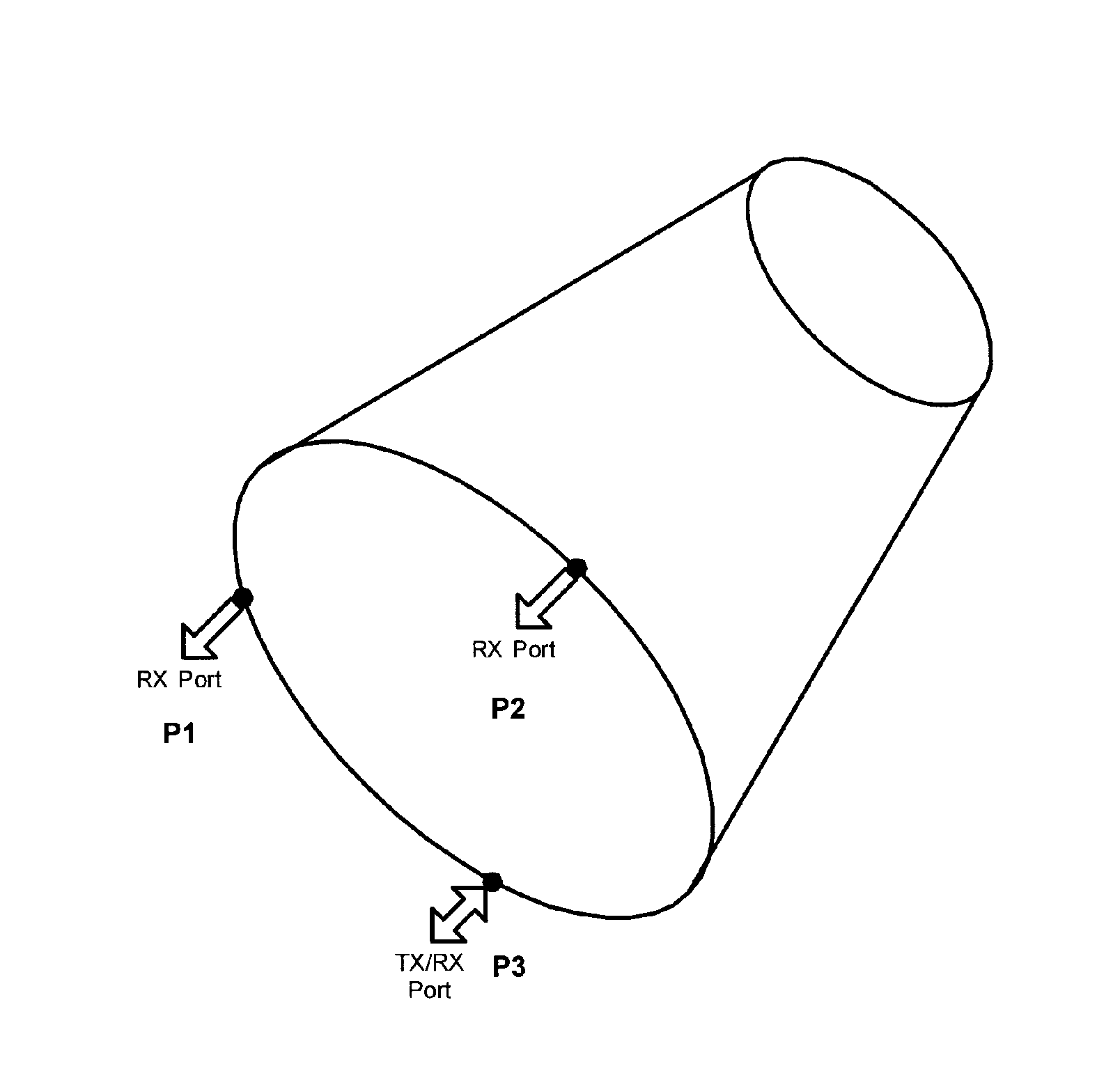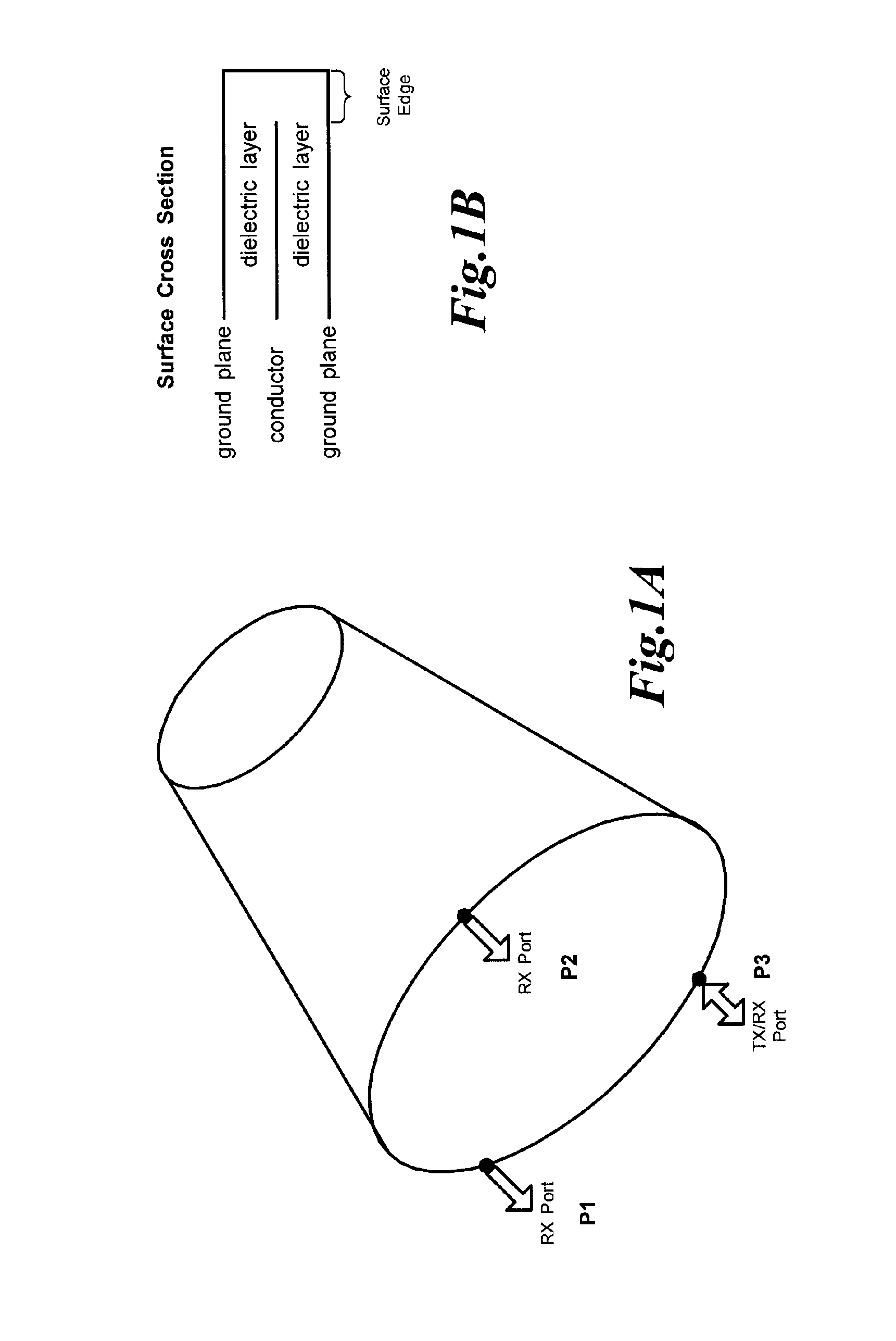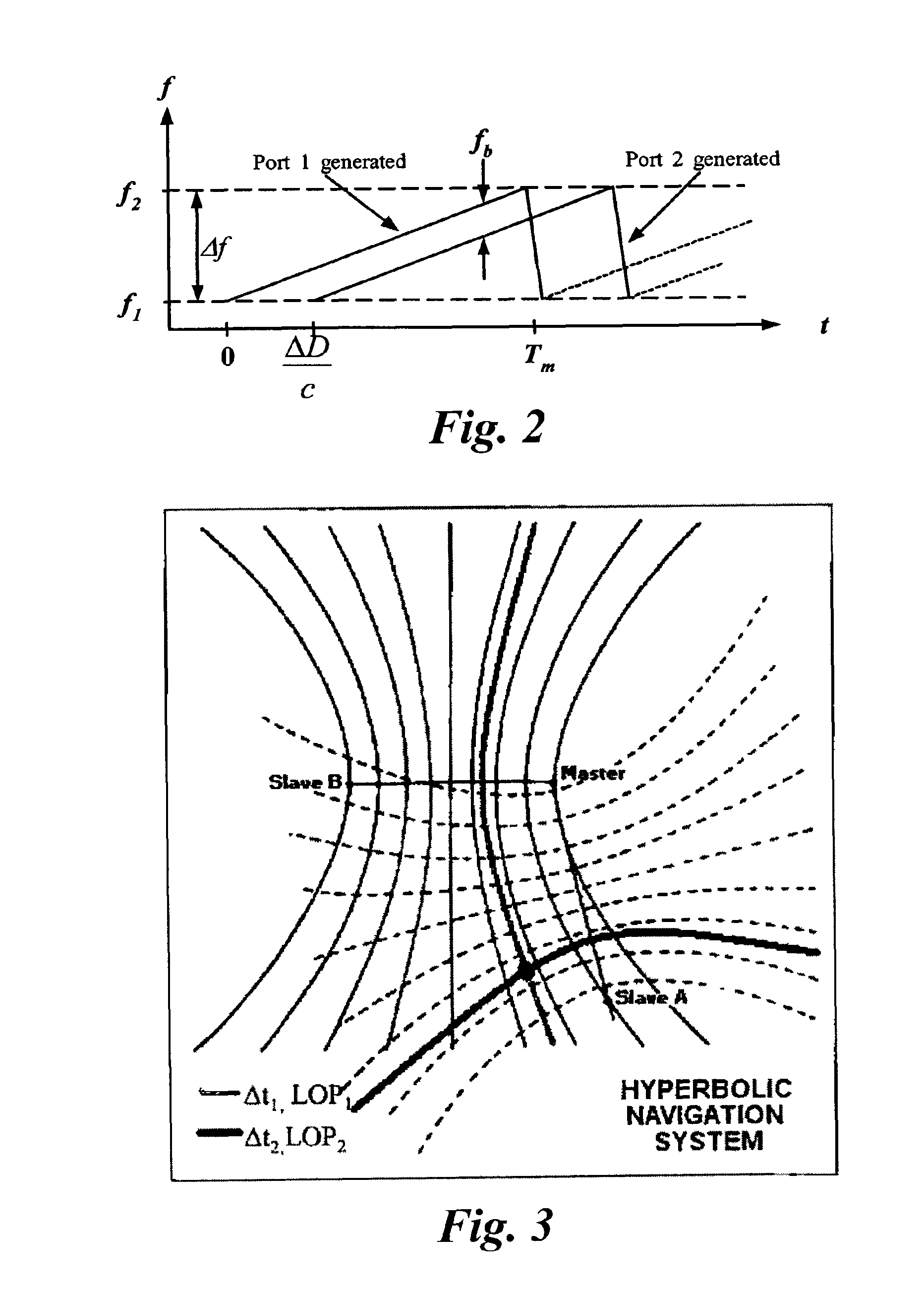Hypervelocity impact detection method and system for determining impact location in a detection surface
a detection method and detection system technology, applied in the direction of instruments, structural/machine measurement, elasticity measurement, etc., can solve the problems of excessive power consumption of high-speed data acquisition electronics, large size, complexity, etc., and achieve significant size, cost, and performance improvement
- Summary
- Abstract
- Description
- Claims
- Application Information
AI Technical Summary
Benefits of technology
Problems solved by technology
Method used
Image
Examples
Embodiment Construction
[0018]Based on data released by the Air Force Research Laboratory (AFRL) from impact testing performed in hypervelocity test chambers, hypervelocity impacts have been shown to generate detectable RF emissions. We have conducted tests at the NASA hypervelocity impact facility at Las Cruces, N. Mex. which has provided data on the frequency content and magnitude of such RF pulses If these RF emissions were to be sensed from multiple geometric locations on the breached surface the precise impact location could be determined by measuring the difference in Time of Arrival (TOA) of the generated signals. The measurement of this very small difference in TOA requires precise electronic timing to detect. For example, a path difference of 1 m corresponds to only 3.33 nanoseconds. Achieving centimeter position resolution requires picosecond timing accuracy. The present hypervelocity impact detection method and system provides a processing technique and system that allows the measurement of thes...
PUM
 Login to View More
Login to View More Abstract
Description
Claims
Application Information
 Login to View More
Login to View More - R&D
- Intellectual Property
- Life Sciences
- Materials
- Tech Scout
- Unparalleled Data Quality
- Higher Quality Content
- 60% Fewer Hallucinations
Browse by: Latest US Patents, China's latest patents, Technical Efficacy Thesaurus, Application Domain, Technology Topic, Popular Technical Reports.
© 2025 PatSnap. All rights reserved.Legal|Privacy policy|Modern Slavery Act Transparency Statement|Sitemap|About US| Contact US: help@patsnap.com



